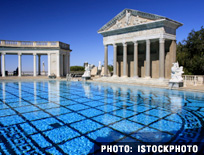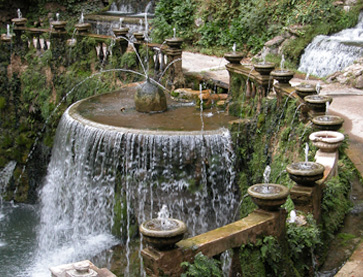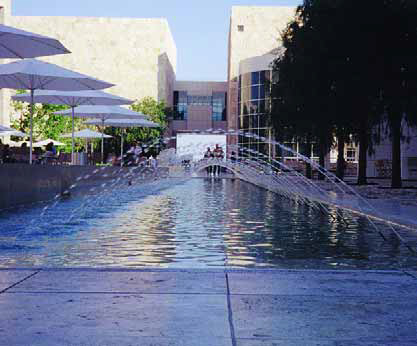Travelogues & History
When Chicago Botanic Garden opened its gates in 1972, those on hand faced the same situation as those who come today: They will never see nor experience the garden alike on any two occasions. For decades, we have personally and carefully watched this remarkable property grow. Along the way, we’ve have shared some of the most profound experiences we’ve ever had in our lives: Both the water elements and the gardens constantly conspire (in the literal sense of the word), breathing as one to create spaces of remarkable beauty, tranquility and diversity. It is truly our slice of heaven on earth. For years now, we have visited the Garden almost every week to refuel our bodies and refresh our minds. We’ll generally start with a light lunch at the Garden Café, sometimes in the company of a client or with work materials we enjoy discussing in this stimulating environment. Part of the joy we experience comes from
I just don't get Hearst Castle. Why should we celebrate the gross-scale purchases of historical artifacts and period-inspired structures by a wealthy American whose main pleasures seem to have involved amusing himself and overwhelming others? I am willing to concede that Hearst's San Simeon compound and collections impress
If you're looking for a destination that includes, all in one place, several of the most enduring and influential watershapes of all time, you couldn't go wrong in visiting Villa d'Este — without question one of the
If you want to gain a full appreciation for classic fountains, pools or waterfeatures, you really do need to pack your bags: Seeing their beauty, power and subtlety at first hand gives us the opportunity to
I grew up in the Phoenix area and have known about Frank Lloyd Wright’s Taliesin West all my life. It was kind of unavoidable: One of the major streets here is named after Wright; the area is marked by examples of architecture that directly reflect his influence; and pretty much everyone in town knows that it was the place Wright used as a summer home while teaching his numerous protégés about his approaches to project design and execution. For my part, however, my closest association with the facility had to do with the fact that my dad routinely delivered produce to the 600-acre facility and often shared stories about the unusual buildings and the occasionally eccentric people he met there. Several decades passed in which I became a watershaper who specializes in contemporary designs, but until quite recently I had never been to Taliesin West. That seems crazy given its vast influence on design in this region, but I made up for my information deficit in a big way last November, after I received a call from a representative of the facility who wanted to speak with me about restoring the facility’s famous
On a recent trip to Spain, Paolo Benedetti and his family took a side-trip to Portugal and happened on some Roman ruins that opened his eyes to a whole new set of possibilities. Here, in a most unusual ‘Solutions’ piece, he describes his encounters with the technologies used to heat an ancient residential indoor swimming pool as well as a collections of pools that made up the public-bath system for a seaside outpost of the Roman Empire. As a pointed expression of the growing global concern over the earth’s changing climate, lots of my clients these days are asking me about alternative methods for heating their pools. It’s a reasonable concern, and I don’t think it will be going away anytime soon. Part of the problem in answering these questions is that neither I nor my clients want to go out on technological limbs and invest in leading-edge or green ideas that have yet to prove themselves. The rest of it probably has to do with the phenomenon of
By now, the thought that watershape and landscape designers need to study nature if they want to replicate it in their projects is basically a cliché. Truly, if you want to mimic nature successfully, you must first know it intimately. What many miss in all this, I believe, is a deeper level of “knowing” that goes well beyond simply observing nature as a source of techniques and ideas. Frankly, I think that as designers and as human beings, we are much better off when we also learn how to become nature – by which I mean letting the sights, sounds and smells draw us physically into the place. In doing so, we engage in experiences so profound that the mere mentioning of that place will set us off with memories we will share enthusiastically – or can use as parts of our latest projects. No matter how often I visit natural places, I’m always amazed at the
In pre-Colonial days, the neck of the woods now known as Longwood Gardens was a hunting ground for the Lenni Lenape tribe, who prized the area for the richness of its game and timber. Once the British arrived, the land moved under the control of William Penn, founder (and namesake) of Pennsylvania, who sold it to a Quaker family by the name of Pierce in the year 1700. The family farmed the property until 1798, when Joshua and Samuel Pierce began planting an arboretum and the space that would one day become Longwood Gardens was born. Those of us living in the Philadelphia area have long enjoyed the privilege of having this resource in nearby Kennett Square, Pa. It's an amazing place, and I find my way there often because it seems that each time I go, there's something
In pre-Colonial days, the neck of the woods now known as Longwood Gardens was a hunting ground for the Lenni Lenape tribe, who prized the area for the richness of its game and timber. Once the British arrived, the land moved under the control of William Penn, founder (and namesake) of Pennsylvania, who sold it to a Quaker family by the name of Pierce in the year 1700. The family farmed the property until 1798, when Joshua and Samuel Pierce began planting an arboretum and the space that would one day become Longwood Gardens was born. Those of us living in the Philadelphia area have long enjoyed the privilege of having this resource in nearby Kennett Square, Pa. It's an amazing place, and I find my way there often because it seems that each time I go, there's something
What’s the use of knowing about history? For many of us, the answer to that question seems so obvious that it comes as a shock to find out just how many people in the watershaping and landscape fields don’t grasp the all-encompassing significance of our collective past – but it shouldn’t. Using my own career as an example – and even though I now spend a considerable amount of my time teaching professionals and university students all about art and architectural history – I confess that I waltzed through more than a few early years as an aspiring landscape architect and watershaper in blissful ignorance of





















